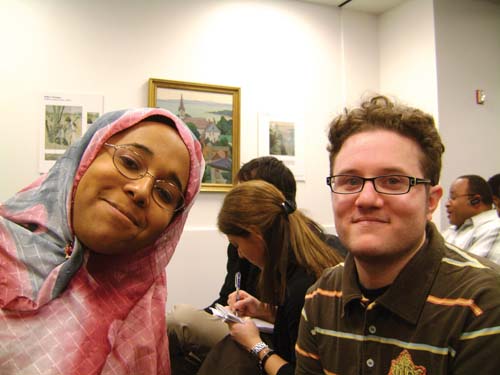A proposal for a Chicago gay high school was abruptly taken off the agenda of the Chicago Public Schools November 19 board meeting. Supporters and opponents of the proposal came to the downtown office of CPS, only to be handed a memo from The Office of New Schools informing them that “[t]he Social Justice Solidarity High School proposal has been withdrawn from consideration during today’s Board meeting.”

Paula Gilovich, a member of the Design Team for the high school and the Education Director of About Face Theatre said that “community input after our October 8 public hearing created changes in our proposal that we were not comfortable with” and the team unanimously decided to withdraw the proposal. One of the changes was in the name of the school, which had originally been titled the Pride Campus of the Social Justice High School.
n addition, according to Gilovich, there were curriculum changes; About Face Theatre was taken out of the proposal; and language was watered down. According to her, “sexual orientation” became “orientation;” the word “identity” could not be included; and neither could “transgender,” which was changed to “appearance.”
News of the withdrawal of the proposal had gone out on e-mail the night before, according to Sam Finkelstein, a member of Gender JUST (Gender Justice United for Societal Transformation). Finkelstein and other supporters decided to attend the meeting regardless “because we’d already done a lot of mobilizing. We don’t want CPS to define our agenda, and we needed to hold the Board of Education accountable.”
Some of the supporters who spoke out in support of the proposal felt that the design team had been forced to cave in. Roger Fraser said “I feel that there was political pressure on this design team from the mayor’s team on down to shelve it.” Andy Thayer, of Gay Liberation Network, said that “a handful of far-right anti-gay preachers worked with CPS hierarchy [to withdraw the proposal].” He added that “We’ve learned that some of the proponents of the Pride campus have had their jobs threatened.” According to CPS, the matter of whether or not people were threatened is under investigation.
There has been dissention on the issue in both the gay and straight communities; not all the opposition to the proposal came from homophobic bigots. Rick Garcia, of the gay-rights group Equality Illinois, told Windy City Timesthat he had questions about the efficacy of setting up a separate campus for LGBTQ students. He said, “If we set up a separate institution, what does it say about our other high schools? Every one of our schools should be safe for everyone. And is it fair that gay kids have to travel across town to a safe environment? What about kids in Edgewater, Hyde Park, Humboldt Park?”
Pastor Wilfredo De Jesús, senior pastor of New Life Convenant Ministries, echoed those sentiments, saying that “[t]he reality is that harassment is happening to kids who’re obese, who are Muslim … to isolate children who are gay does not solve the root of our problem. The goal is to teach our children to respect one another. Gays fought a long time to be included. Surely the gay community would argue that to isolate gay kids is [counterproductive].”
Hontas Farmer, a transgendered woman who attended the meeting, remembered being discriminated against as a student. But she felt that the gay high school was “an easy solution to a difficult problem. We should want every school to be safe so that LGBT students have a variety of educational opportunities. We all have to live with one another, and schools are a big part of [learning] that.”
Farmer also felt that the process had not been open enough. Her view was echoed by Finkelstein, who said that “there wasn’t ownership by the community. LGBTQs are angry because this was happening in a bubble in CPS.”
Gulovich, when asked if the community proposal had been as transparent and open as it could be, said that ‘”We did have to move quickly but I do believe that we’ve kept it open as possible and we’ll continue to be very open. Dissent within the community might be a reflection of how the larger community has been discussing it from the beginning.”
There’s little doubt that the harassment of LGBTQ students is or has been a real problem for many. John Coleman, also at the meeting and about to graduate with a Master’s degree from Roosevelt University, recalled the bullying which forced him to suspend his education for twelve years before finally enrolling at RU as a non-traditional student. “I’m only here because I’m at a university that’s supportive, where I’ve been able to come back and achieve.”
The question of how to resolve the issue, whether through a separate campus or through wider integration of anti-bullying measures and faculty training, will no doubt be a topic of discussion within both the gay and straight community.
For some, that’s not a bad thing. Garcia commended the design team for the “the great work it had done in that the Chicago School District, school authorities and teachers have recognized that something needs to be done to protect gay kids and to ensure they get the education they deserve.”